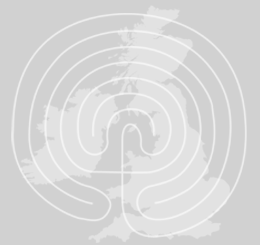the return of an extinct animal?
When I was a kid I lived in Hawaii and learned all about the endangered O’o bird…which is now extinct. The list of extinct animals was and is tragically long. But the Black footed ferret has been rediscovered…the whooping crane may survive…roseate spoonbills are comfortable…more people own buffalo than the national parks…and *cross your fingers* the ivory billed woodpecker may be back.
When I was a kid I lived in Hawaii and learned all about the endangered O’o bird…which is now extinct. The list of extinct animals was and is tragically long. But the Black footed ferret has been rediscovered…the whooping crane may survive…roseate spoonbills are comfortable…more people own buffalo than the national parks…and *cross your fingers* the ivory billed woodpecker may be back.
But this is something very interesting. They’ve spotted a seal of some kind in florida waters.
http://www.youtube.com/watch?v=8qSZeXGfm4M gotta love you tube
http://www.associatedcontent.com/article/1677588/monsterquest_florida_sea_monster.html
and I stumbled on this one and thought it was really interesting.
http://cryptoreports.com/tag/sea-monster




Re: the return of an extinct animal?
Slightly smaller scale but interesting http://www.bbc.co.uk/news/uk-england-11806723
Re: the return of an extinct animal?
I have some doubts about that Youtube footage: it looks like a mishmash of various, unrelated films. A couple of them clearly show a creature with a seriously damaged tail and back, another couple a tail that looks suspiciously like a Sea Lion of some sort… clearly not the same creature. The "head" one looks doctored to me.
California Sea Lions (Zalophus californianus) have been reported in Florida and they turned out to be either escapees from aquariums or released by unscrupolous owners. A few stray Hooded seals (Cystophora cristata) have been confirmed as well.
Perhaps there’s an out of place or seriously wounded animal behind it but I seriously doubt it’s something "unknown".
Re: the return of an extinct animal?
I use the term unknown to mean something that hasn’t yet been identified…and it could well be a common animal that has been turned loose.
You know what intrigues me is how the Monk seal which still exists in Hawaii….and perhaps the Merditerranean near Israel (I saw something on this) got so far apart from one another.
Re: the return of an extinct animal?
The two largest remaining populations of Mediterranean Monk Seals are in the Aegean and around Cabo Blanco.
The evolution of Seals is very fascinating: the Suborder Pinnipedia probably originated in the North Pacific about 40 millions years ago. From here they spread south and East through the still open Panama Isthmus. During this spread the Suborder splint into the three main families Odobenidae (walrus and its ancestors), Otaridae (eared seals) and Phocidae (earless seals).
Uopn reaching the Atlantic the Phocidae split in three: one group made its way to the Artic, a second to Antarctica (both these groups were already exibiting pagophilic "cold-loving" traits) and the third made its way to the Thetis Sea, the large inland sea which also covered what is now the Mediterranean. This last "tribe", the Monachini, were the only group which developed "warmth loving" traits. These were the ancestors of the modern Monk seals.
Monk seals then exited the Thetis about 10 million years ago and migrated west towards the Carribean. This group gave rise to the now extint Carribean Monk Seal. About 4 million years ago the Carribean group again migrated west, through the Panama Isthmus (apparently using a network of rivers and lakes in the closing Isthmus) , finally colonizing the Hawaii.
Re: the return of an extinct animal?
Wow…fascinating. And you made me think of something. The leopard seal lives in the Anartica..but Bering when he wrote about the animals that he saw in Alaska mentioned a sea leopard. Now days people use the term for the leopard seal which is a dangerous seal…but what was it that Bering saw in Alaska?
Re: the return of an extinct animal?
Wasn’t there a carribean seal I seem to remember being thought extinct?
Summum Nec Metuam Diem Nec Optima
Re: the return of an extinct animal?
yes the monk seal…but recently in Florida a seal like creature has been spotted raising hopes that it might be a monk seal.
Re: the return of an extinct animal?
Up to the early XX century common names were much confused. For example in Australia a "Sea Leopard" was not the present day Leopard seal (Hydrurga leptonyx), on occasional visitor to that Continent, but a catch-all term for endemic Sea lions and Fur seals.
It must also be understood that Steller only saw a Fur seal "in flesh" later, when his expedition reached the rookeries of Ostrov Bering. It’s perfectly possible Bering saw a Fur seal.
As far as the Caribbean monk seal (Monachus tropicalis) goes all searches have turned out nothing, so it’s presumed extinct since 1959. One of the issues with Monk seals is linked to how they changed their behavior. The Mediterranean population never fully recovered from intense hunting in Roman times and the survivors radically changed their behavior: they shifted their rooking grounds from open coastlands (a behavior they still exhibit in Cabo Blanco) to seaside caves and other inaccessible locations.
We can speculate ther Caribbean kins were able to linger longer by adopting a similar behavior.